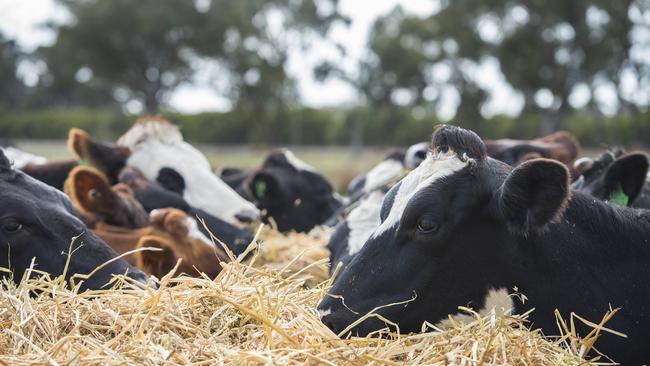Discounting comes into play to reduce oversupply
Growers are resorting to price cutting to offload stocks before the start of a new crop in spring.

THE new financial year has seen some new enthusiasm for growers to find a home for their cereal hay, and price is the tool they are using to sell.
Growers in the Riverina and southern Mallee who were offering cereal hay at $240 a tonne ex-farm plus GST last month are now competing with new sellers at $190 to $210.
Unlike previous winters, hay demand has failed to appear, primarily due to adequate stocks held by livestock producers.
According to hay merchants in South Gippsland, it’s the best winter for feeding cows for 10 years.
The area has had an ideal autumn and winter with only a short dry period in late January when dairy farmers did not have access to pastures for their cows to graze.
There are a few dark-looking paddocks that show signs of bogging, but the dry weather this week should help with the recovery. Overall, pastures are holding up and silage stocks are high.
Like their colleagues in the southwest of Victoria, the silage harvest was substantial, extending into February as paddocks provided multiple cuts.
Following some mild temperatures in February and March, the cutting of maize silage was delayed to late May to enable ripening.
Through price discounting to long-time buyers, some growers are finding sufficient demand to help clear their shed before the new crop in spring.
Some sellers are realising that as well as discounting, often personal contacts are also required to make a sale.
The drier weather this week will help growers along the Murray River who are cutting early sown cereal crops for silage.
The financial viability of transporting silage over 100 to 200km has been dubious in the past due to the high-water content of the feed.
If silage can be left to wilt to a drier than normal level and then heavily compacted into high density large square bales, the silage should ferment in an anaerobic environment and achieve a viable payload of dry matter fodder.
Dry regions for potential hay demand are rare this winter, but Bega Valley and the Monaro in southern NSW and southern Queensland are still a chance for sellers.
Road trains of straw and cereal hay from Victoria and South Australia are still making their way to feedlots in southern Queensland.
All straw from Victoria is now priced under $100 a tonne ex-farm, but finding a buyer at any price will still be a
challenge.
Bega received 56mm on Sunday and it was still raining on Monday. That rain on to the light soils of the Bega Valley will help pastures recover quickly, but hay and straw will still be needed.
As the $100 a tonne road freight over the mountains to Bega is a big factor, the fresh sellers who are appearing near Wagga Wagga are likely to get the business.
MORE
GROWERS, SELLERS TO MOVE RESIDUAL HAY AND STRAW


